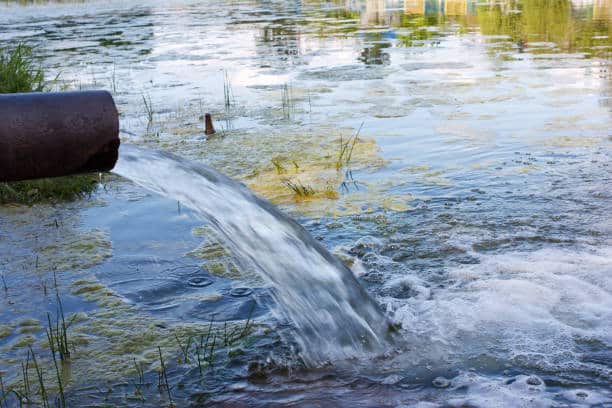To ensure environmental sustainability and compliance, effective environmental risk assessments are indispensable for organizations in Australia, especially those in high-impact sectors. Discover how to shield your business from environmental threats and align with health and safety standards through our step-by-step guide.
Emerging Trends in Contaminated Site Remediation
In the dynamic field of environmental protection, contemporary strategies for remediating contaminated sites are evolving rapidly. These advancements are driven by a deeper understanding of ecological impacts and a commitment to safeguarding human health.
- Precision Remediation
A key emerging trend is precision remediation, which involves targeted treatment of contaminated zones. This approach reduces unnecessary intervention in non-contaminated areas, ensuring a more focused and cost-effective cleanup.
- Digital Twin Technology
Digital twin technology, creating virtual replicas of physical sites, is revolutionizing site analysis. This allows for detailed simulation and modeling of remediation scenarios, enabling more accurate planning and execution of remediation strategies.
- Remediation Performance Tracking
Advancements in sensor technology enable real-time tracking of remediation performance. This ensures ongoing adjustment and optimization of strategies, leading to more efficient cleanup operations.
- Climate Change Considerations
As climate change impacts become more evident, remediation strategies are increasingly taking into account future climate scenarios. This ensures that remediated sites remain safe and stable under changing environmental conditions.
- Community Involvement
There is a growing trend towards involving local communities in the remediation process. This includes public consultations and participatory decision-making, ensuring that the concerns and needs of local populations are addressed.
- Regulatory Evolution
Changes in environmental regulations are driving the adoption of new remediation methods. Regulatory bodies are increasingly favoring approaches that minimize environmental impact and promote sustainable practices.
- Cross-Disciplinary Approaches
Remediation is becoming more interdisciplinary, integrating knowledge from fields such as ecology, engineering, and sociology. This holistic approach leads to more effective and sustainable remediation strategies.
Remediation Technologies for Specific Contaminants
Innovative remediation technologies are being tailored to address specific contaminants. This specificity is crucial, as different pollutants require different approaches for effective remediation. For instance, technologies for heavy metals differ significantly from those for organic contaminants.
- Phytoextraction for Heavy Metals: Plants are used to absorb heavy metals from the soil, which are then harvested and disposed of safely.
- Bioremediation for Organic Pollutants: Utilizing microorganisms to break down organic contaminants like petroleum hydrocarbons.
- Chemical Oxidation for Persistent Chemicals: Applying chemical oxidants to degrade complex chemicals, including chlorinated solvents.
- Thermal Desorption for Volatile Organic Compounds (VOCs): Heating soil to vaporize and remove VOCs.
- Electrokinetic Remediation for Metal Contaminants: Using electrical currents to mobilize and extract metals from soils.
- Immobilization for Radioactive Wastes: Applying materials that bind with radioactive contaminants, reducing their mobility.
- Nanoremediation for Various Contaminants: Employing nanoparticles to treat a wide range of contaminants, including metals and organics.
Sustainable Remediation Approaches
Sustainability in remediation involves using methods that minimize environmental footprints while being effective. This includes:
-
- Green Energy for Remediation Operations: Utilizing renewable energy sources, such as solar or wind power, for running remediation equipment.
- Eco-Friendly Material Usage: Employing materials that have minimal environmental impact for containment, treatment, or stabilization purposes.
- Water Conservation Techniques: Implementing strategies that reduce water usage during remediation, such as recycling process water.
- Low-Impact Excavation Methods: Using excavation techniques that minimize disturbance to the surrounding environment.
- Natural Attenuation: Allowing natural processes to degrade contaminants over time, supplemented by monitoring and minimal intervention.
- Reuse of Remediated Land for Green Spaces: Converting cleaned-up areas into parks, community gardens, or other green spaces.
- Waste Reduction and Recycling: Minimizing waste generation during remediation and recycling materials wherever possible.
Risk-Based Remediation
Risk-based remediation focuses on the level of risk contaminants pose to human health and the environment. This approach allows for a more efficient allocation of resources, focusing efforts where they are most needed to reduce risks to acceptable levels.
- Adaptive Risk Assessment Models
Advanced modeling techniques are being used to adaptively assess risks, taking into account changing site conditions and exposure scenarios. This allows for dynamic risk management that responds to real-time data.
- Integrated Risk Communication
Efforts are being made to integrate risk communication strategies, ensuring that all stakeholders, including the public and regulatory authorities, are informed and engaged throughout the remediation process.
- Tailored Health Risk Analysis
Health risk analysis is becoming more tailored, focusing on the specific demographics and populations most at risk from contaminated sites. This ensures that remediation efforts are directed towards reducing health risks to these groups.
- Economic Risk Evaluation
There is an increasing trend to include economic risk evaluations in the remediation planning process, assessing the potential financial impacts of both contamination and remediation activities.
- Risk Prioritization in Multi-Site Portfolios
For organizations managing multiple contaminated sites, risk-based prioritization frameworks are being developed to allocate resources efficiently, addressing the most critical sites first.
- Long-term Monitoring and Management
Long-term monitoring and risk management plans are being implemented to ensure that remediated sites remain safe and do not pose future risks to human health or the environment.
- Community Health Monitoring Programs
Community health monitoring programs are being established in areas surrounding contaminated sites to track potential health impacts over time and adjust remediation strategies accordingly.
Site-Specific Remediation
Each contaminated site presents unique challenges. Site-specific strategies consider factors like local geology, hydrology, and the specific contaminants present, ensuring that the remediation approach is as effective and efficient as possible.
- Geospatial Data Integration
Integrating geospatial data into remediation planning allows for a more detailed understanding of site-specific conditions, such as soil composition, topography, and water flow patterns.
- Local Ecosystem Restoration
Remediation plans increasingly include measures for restoring local ecosystems post-cleanup, ensuring that native flora and fauna can thrive in the remediated environment.
- Customized Remediation for Urban Settings
Urban remediation strategies are being customized to address the unique challenges of contaminated sites in densely populated areas, including minimizing disruptions and ensuring public safety.
- Agricultural Land Remediation
Specific strategies for agricultural lands focus on maintaining soil fertility and ensuring that crops grown post-remediation are safe for consumption.
- Cultural and Historical Considerations
In areas of cultural or historical significance, remediation plans are being developed with sensitivity to preserve historical artifacts and respect cultural heritage.
- Climate Adaptation in Remediation
Climate adaptation measures are being incorporated into site-specific remediation plans to ensure that remediated sites are resilient to changing climate conditions.
- Custom Technologies for Unique Contaminants
Development and application of custom remediation technologies are tailored to unique contaminants found at specific sites, ensuring effective treatment of these pollutants.
Brownfield Redevelopment
Brownfield redevelopment involves the remediation of previously contaminated land for new uses. This not only cleans up environmental hazards but also revitalizes communities by converting derelict spaces into useful, productive areas.
- Mixed-Use Development Strategies
Brownfield sites are increasingly being targeted for mixed-use developments, combining residential, commercial, and recreational spaces to revitalize communities.
- Green Building in Redevelopment
Incorporating green building principles into redevelopment projects, ensuring that new constructions are environmentally sustainable and energy-efficient.
- Community Engagement and Development
Active community engagement in the redevelopment process, ensuring that the needs and desires of local residents are reflected in the final outcome.
- Economic Incentives for Redevelopment
Implementation of economic incentives, such as tax credits or grants, to encourage investment in brownfield redevelopment projects.
- Public-Private Partnerships
Formation of public-private partnerships to leverage the strengths and resources of both sectors in the redevelopment of brownfield sites.
- Sustainable Infrastructure Integration
Integration of sustainable infrastructure, such as renewable energy sources and green transportation options, into redevelopment projects.
- Historical Preservation and Modernization
Balancing historical preservation with modernization in redevelopment projects, maintaining the character of an area while providing contemporary amenities and facilities.
New Horizons in Contaminated Site Remediation
Emerging technologies and approaches are continually expanding the horizons of contaminated site remediation. These include:
- AI and Machine Learning in Site Assessment
Artificial intelligence (AI) and machine learning algorithms are being used for more accurate site assessments, predicting contamination spread and optimizing remediation plans.
- Drone and Satellite Imaging
Advanced imaging technologies, like drones and satellites, are providing comprehensive site overviews, enabling better planning and monitoring of remediation activities.
- Genomic Tools in Bioremediation
Genomic tools are being employed to enhance bioremediation strategies. These tools help in identifying and engineering microorganisms that are more efficient in degrading specific contaminants.
- Internet of Things (IoT) for Monitoring
IoT devices are revolutionizing real-time monitoring of remediation progress, providing continuous data on environmental parameters and contaminant levels.
- Blockchain for Remediation Data Integrity
Blockchain technology is being explored to maintain integrity and traceability of remediation data, ensuring transparency and accountability in environmental projects.
- Collaborative International Research Initiatives
International collaborations in research are leading to the development of innovative remediation techniques, drawing on global expertise and experiences.
- Advanced Chemical Sensors
The development of advanced chemical sensors capable of detecting contaminants at very low concentrations is enabling earlier intervention and more precise remediation efforts.
Advancing Remediation Technologies
The advancement of remediation technologies is a continuous process. Innovative methods, such as electrokinetic remediation and phytoremediation, are gaining traction for their effectiveness and lower environmental impacts.
- Nanobiotechnology
Nanobiotechnology combines nanotechnology and biotechnology for highly effective remediation methods, particularly in treating complex organic pollutants.
- Electro-Bioremediation
Electro-bioremediation, which integrates electrokinetic and bioremediation techniques, shows promise in treating a wide range of soil and groundwater contaminants.
- Advanced Oxidation Processes (AOPs)
AOPs use combinations of oxidants and UV light to break down complex organic pollutants, offering an effective solution for recalcitrant compounds.
- Permeable Reactive Barriers (PRBs)
PRBs are evolving to become more effective and less intrusive, offering a sustainable option for treating contaminated groundwater in situ.
- Hyperaccumulator Plants
The use of hyperaccumulator plants in phytoremediation is expanding, with research focusing on species that can absorb high levels of specific contaminants.
- Microbial Fuel Cells
Microbial fuel cells not only treat contaminated water but also produce electricity, representing a sustainable approach to remediation.
- Zero-Valent Iron Nanoparticles
Zero-valent iron nanoparticles are proving effective in treating a variety of contaminants, including chlorinated compounds and heavy metals, due to their high reactivity.
Innovative Remediation Case Studies
Case studies play a vital role in demonstrating the practical applications of new remediation strategies. These studies provide valuable insights into the effectiveness of different approaches and offer guidance for future projects.
- Urban Brownfield Remediation
A case study showcasing the transformation of an urban brownfield site into a thriving community space, employing a combination of bioremediation and soil stabilization techniques.
- Industrial Site Cleanup
An industrial site cleanup using advanced oxidation processes, demonstrating how innovative chemical treatments can effectively deal with complex industrial pollutants.
- Agricultural Land Reclamation
A project involving the reclamation of agricultural land contaminated with heavy metals, using phytoremediation and soil amendment strategies.
- Groundwater Remediation with PRBs
A successful case of groundwater remediation in a residential area using permeable reactive barriers, illustrating the effectiveness of this technology in sensitive environments.
- Coastal Area Oil Spill Response
A coastal area impacted by an oil spill where a combination of mechanical recovery and bioremediation was used, showcasing effective strategies for marine environments.
- Landfill Leachate Treatment
Implementation of a landfill leachate treatment project using microbial fuel cells, highlighting the dual benefits of remediation and energy production.
- Radioactive Site Decontamination
A case study on the decontamination of a site affected by radioactive waste, employing advanced immobilization and containment techniques.
Global Perspectives on Contaminated Site Remediation
The global perspective on contaminated site remediation emphasizes the importance of international collaboration and knowledge sharing. By learning from global experiences, the field of remediation can adapt and evolve more effectively.

International Technology Transfer – The transfer of remediation technologies between countries, facilitating access to advanced solutions for developing nations.
Global Environmental Impact Studies – Studies assessing the global environmental impact of contaminated sites and how international cooperation can address transboundary contamination issues.
Worldwide Bioremediation Applications – Exploring how bioremediation techniques are adapted and applied in different regions around the world, taking into account local ecological conditions and species.
International Conferences and Collaborations – The role of international conferences and collaborations in fostering knowledge exchange and joint research initiatives in the field of site remediation.
United Nations Environmental Programs – The involvement of United Nations programs in guiding and supporting contaminated site remediation efforts globally, particularly in countries with limited resources.
Comparative Studies of Remediation Techniques – Comparative studies of remediation techniques employed in different countries, offering insights into their effectiveness in various environmental and socio-economic contexts.
As leaders in Australia’s contaminated land industry, iEnvironmental Australia is at the forefront of implementing these innovative strategies. Our approach to contaminated site remediation and validation is grounded in expertise, sustainability, and a commitment to environmental protection and human health. We invite our readers to engage with these ideas, share their thoughts, and explore how our services can assist in addressing contaminated soil and other environmental challenges.


